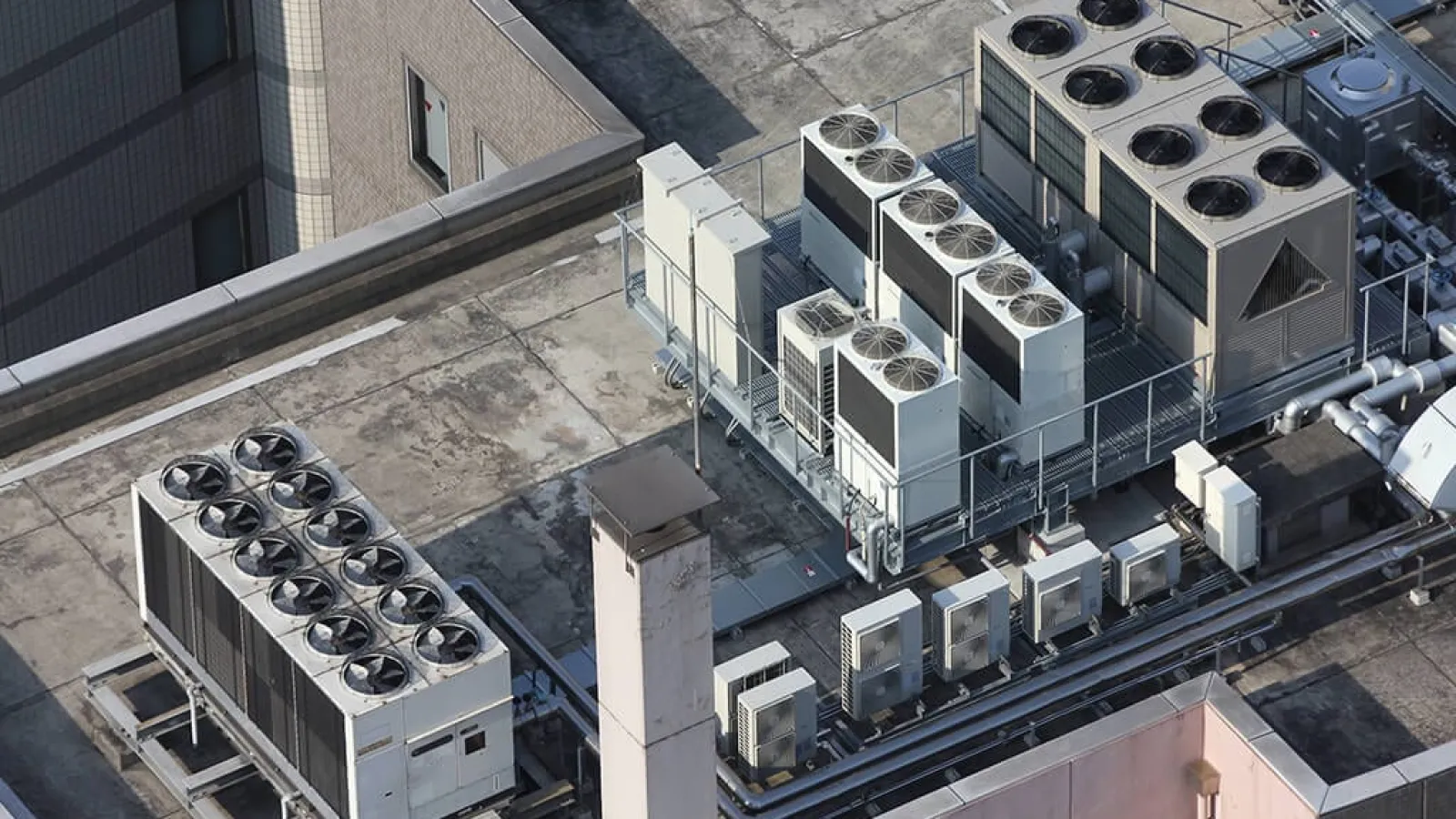H1: Improving HVAC Air Quality to Prevent Sick Building Syndrome
Atlanta's warm climate keeps its landscape lush and green nearly year-round — but that also means higher pollen levels and humidity that can impact your HVAC air quality indoors. For businesses, these conditions contribute to allergy symptoms, reduced productivity, and even a condition known as sick building syndrome.
At Estes Services, we help businesses improve indoor air quality (IAQ) through optimized commercial HVAC systems, ventilation upgrades, and commercial dehumidification systems that maintain comfort and control moisture from the air.
H2: How Poor HVAC Air Quality Impacts Health and Productivity
When the air inside a commercial building contains pollutants, allergens, or excess humidity, it can trigger a range of health issues for occupants. This is often referred to as sick building syndrome, a condition where people experience symptoms tied directly to time spent indoors.
Common symptoms include:
Headaches and fatigue
Irritation to the eyes, nose, and throat
Sneezing, coughing, or allergic reactions
Dry or itchy skin
Dizziness and nausea
Difficulty concentrating
Most of these symptoms improve once the person leaves the affected building — a clear sign of poor indoor air quality or poor ventilation.
Over time, unchecked humidity and contaminants allow bacteria, dust mites, and mold spores to spread through heating and cooling systems, affecting employees and visitors alike.
H2: The Link Between Indoor Air Quality and Sick Building Syndrome
A study of green-certified commercial buildings showed that employees working in spaces with improved ventilation systems and cleaner air experienced up to 30% fewer headaches and respiratory symptoms.
Enhanced ventilation not only improved health but also boosted productivity, thanks to reduced fatigue and fewer absences from allergy symptoms and respiratory irritation.
These findings highlight how improving indoor air quality through efficient HVAC systems for commercial buildings is both a health and business advantage.
H2: Common Causes of Poor Indoor Air Quality in Commercial Spaces
Poor IAQ can develop from multiple sources within a facility, including:
Insufficient ventilation that fails to bring in enough fresh outdoor air
Dirty air filters and unmaintained air conditioning systems
High humidity levels that allow mold and mildew to thrive
Carbon monoxide or chemical byproducts from industrial processes
Moisture from the air seeping into building materials or ductwork
These issues not only create discomfort but also increase the likelihood of allergic reactions, poor air flow, and long-term damage to the facility itself.
H2: Solutions to Improve HVAC Air Quality in Commercial Buildings
You can dramatically improve HVAC air quality and prevent sick building syndrome by making strategic upgrades to your heating and cooling systems and maintaining balanced humidity levels.
Here are the most effective ways:
1. Upgrade Your Ventilation Systems
Properly designed ventilation systems help remove stale indoor air and replace it with filtered outdoor air. This process dilutes pollutants, allergens, and odors while maintaining better oxygen levels for building occupants.
Learn more about commercial HVAC services from Estes to see how proper ventilation can transform your workplace comfort and energy efficiency.
2. Regular HVAC System Maintenance
Dirty air filters and neglected components reduce airflow and trap contaminants. Regular HVAC maintenance ensures air conditioning systems and heating systems operate efficiently, maintaining clean and balanced airflow.
3. Control Humidity with Dehumidification Systems
Too much humidity leads to mold, mildew, and dust mites. A commercial dehumidification system helps remove moisture from the air and maintain a controlled humidity between 40% and 55%.
Dehumidifiers work alongside heating, ventilation, and air conditioning systems to draw moisture from circulating air and discharge it safely, protecting your building and occupants.
4. Improve Air Filtration and Air Cleaning
Advanced filtration or UV air purification can remove fine particles, volatile organic compounds (VOCs), and bacteria that standard filters miss. This step further enhances energy efficiency and air quality.
H2: Why Moisture Control Matters for Commercial Buildings
Excess humidity isn't just uncomfortable — it can damage building materials and equipment. When the air cools, the amount of water vapor it can hold decreases, leading to condensation on walls and ducts.
Without commercial dehumidification systems, this trapped moisture can cause:
Mold growth in walls, carpets, or ceiling tiles
Rust or corrosion in HVAC equipment
Increased energy consumption as systems struggle to heat and cool properly
Balancing humidity is key to maintaining optimal energy efficiency and a safe indoor environment.
If your facility experiences lingering dampness or odors, consult an Estes Commercial HVAC expert to evaluate your moisture control system.
H2: Boost Your HVAC Air Quality with Estes Services
At Estes Services, we specialize in helping Atlanta businesses improve HVAC air quality through customized commercial HVAC solutions that promote health, comfort, and efficiency.
From system maintenance and air filter upgrades to complete ventilation system design and commercial dehumidifier installation, our experts deliver long-term results that keep your workplace safe and productive.
📞 Call (404) 362-6960 or schedule your service today to improve your indoor air quality and prevent sick building syndrome.
It's That Easy; It's Estes.
FAQs About HVAC Air Quality and Sick Building Syndrome
1. What is sick building syndrome?
It's a condition where occupants experience allergy-like or respiratory symptoms linked to time spent inside a building with poor indoor air quality or poor ventilation.
2. How can commercial HVAC systems improve indoor air quality?
By maintaining clean filters, proper ventilation, and controlled humidity, your HVAC system can reduce contaminants and allergens that trigger allergy symptoms.
3. What role does humidity play in indoor air quality?
Balanced humidity levels prevent mold, bacteria, and moisture buildup, protecting both people and building materials.
4. How often should HVAC air filters be changed?
For most commercial buildings, filters should be replaced every 1-3 months depending on system use and local air quality conditions.
5. Can a dehumidifier help prevent sick building syndrome?
Yes. Commercial dehumidification systems help remove moisture from the air, keeping humidity levels in check and reducing allergen growth.


